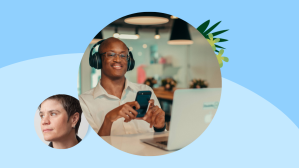As the Head of Product Accessibility at Salesforce, Global Accessibility Awareness Day is incredibly important to me, both personally and professionally. But it’s also a critical reminder for leaders, builders and designers across the world. More than one billion people have a disability — 15% of the global population — and with our world moving more digital than ever before, we need to make sure everyone is able to access it.
When I talk about accessibility, I often start with design. The traditional approach is to design for “average”, hoping users meet in the middle. But, this creates a rigid product, not only inaccessible to many people with disabilities, but also inaccessible for anyone experiencing the product outside of an “average” environment, like a loud coffee shop, or with kids providing a distraction in a home office.
To evolve, we must design for difference. By bringing people with disabilities — lifelong problem solvers — into the process, we often uncover solutions that are better than those designed for the norm. They are integral to helping us see things in a new way.
Designing for difference also means designing for “momentary disability.” This comes up in our daily lives in new environments, like tunnel vision when driving, or trouble hearing on a call when we have significant background noise.
For example, voice recognition. While initially designed for people with mobility issues, this technology is now a critical part of our lives — you can easily access your phone while holding your baby, cooking or driving. One day, we will be able to navigate all of our digital products just by the sound of our voice.
We’ve seen a lot of this come into play during the pandemic. Many of us are now working in new environments — kids tugging at our legs, different lighting throughout the house, background noise — and technologies originally designed for disability are now critical to our experiences. Things like autocomplete and a screen that adapts to different lighting situations are innovations that have made all of us more efficient and focused.
To evolve, we must design for difference. By bringing people with disabilities — lifelong problem solvers — into the process, we often uncover solutions that are better than those designed for the norm. They are integral to helping us see things in a new way.
Elise Roy
Companies that create a culture of inclusion, celebrate people’s differences and fully integrate this power into their products harness a creativity and innovation that will help them meet customers where they are. When we intentionally include people with disabilities in our design process, we bring in lifelong problem solvers, and solve for pain points for everyone. We also create a product and experience that can weather change — one that is truly accessible to a global community.
To learn more about Salesforce commitment to inclusive design, read our Global Accessibility Awareness Day post and check out our Accessibility trailhead.



















